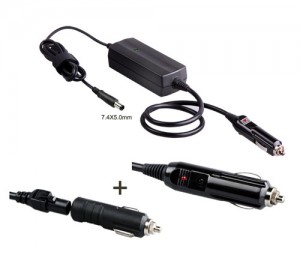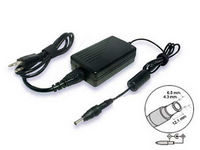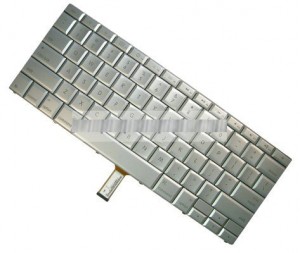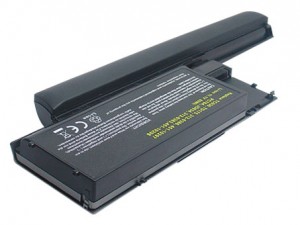The laptop battery runtime is governed by other attributes than the specified capacity alone.
This paper examines the cause of unexpected downtime and short laptop battery service life. We look at four renegades – declining capacity, increasing internal resistance, elevated self-discharge and premature voltage cut-off on discharge. We evaluate how these regenerative deficiencies affect nickel, lead and lithium-based batteries.
Declining capacity
The amount of charge a battery can hold gradually decreases due to usage and aging. Specified to deliver 100% capacity when new, the laptop battery should be replaced when the capacity drops to below 80% of the nominal rating. Some organizations may use different end-capacities as a minimal acceptable performance threshold.
The energy storage of a battery can be divided into three imaginary sections consisting of: available energy, the empty zone that can be refilled, and the unusable part (rock content) that increases with aging.
In nickel-based batteries, the so-called rock content is present in form of crystalline formation, also known as memory. Restoration is possible with a full discharge to one volt per cell. However, if no service is done for four months and longer, a full repair becomes increasingly more difficult the longer service is withheld. To prevent memory, nickel-based batteries should be deep-cycled once every one or two months. Nickel-cadmium and nickel-metal-hydride batteries are used for two-way radios, medical instruments and power tools.
Performance degradation of the lead-acid battery is caused by sulfation and grid corrosion. Sulfation is a thin layer that forms on the negative cell plate if the laptop battery is being denied a fully saturated charge. Sulfation can, in part, be corrected with cycling and/or topping charge. The grid corrosion, which occurs on the positive plate, is caused by over-charge. Lead-acid batteries are used for larger portable devices and wheeled applications.
Lithium-ion batteries lose capacity through cell oxidation, a process that occurs naturally during use and aging. The typical life span of lithium-ion is 2-3 years under normal use. Cool storage a 40% charge minimizes aging. An aged lithium-ion cannot be restored with cycling. Lithium-ion is found in cell phones and mobile computing.
Increasing internal Resistance
The capacity of a laptop battery defines the stored energy – the internal resistance governs how much energy can be delivered at any given time. While a good laptop battery is able to provide high current on demand, the voltage of a laptop battery with elevated resistance collapses under a heavy load. Although the laptop battery may hold sufficient capacity, the resulting voltage drop triggers the ‘low battery’ indicator and the equipment stops functioning. Heating the laptop battery will momentarily increase the output by lowering the resistance.
A laptop battery with high internal resistance may still perform adequately on a low current appliance such as a flashlight, portable CD player or wall clock. Digital equipment, on the other hand, draw heavy current bursts.
Nickel-cadmium offers very low internal resistance and delivers high current on demand. In comparison, nickel-metal-hydride starts with a slightly higher resistance and the readings increase rapidly after 300 to 400 cycles.
Lithium-ion has a slightly higher internal resistance than nickel-based batteries. The cobalt system tends to increase the internal resistance as part of aging whereas the manganese (spinel) maintains the resistance throughout its life but loses capacity through chemical reaction. Cobalt and manganese are used for the positive electrodes.
High internal resistance will eventually render the laptop battery useless. The energy may still be present but can no longer be delivered. This condition is permanent and cannot be reversed with cycling. Cool storage at a partial state-of-charged (40%) retards the aging process.

The internal resistance of Lead-acid batteries is very low. The battery responds well to short current bursts but has difficulty providing a high, sustained load. Over time, the internal resistance increases through sulfation and grid corrosion.
Elevated self-discharge
All batteries suffer from self-discharge, of which nickel-based batteries are among the highest. The loss is asymptotical, meaning that the self-discharge is highest right after charge and then levels off. nickel-based batteries lose 10% to 15% of their capacity in the first 24 hours after charge, then 10% to 15% per month afterwards. One of the best batteries in terms of self-discharge is Lead-acid; it only self-discharges 5% per month. Unfortunately, this chemistry has the lowest energy density and is ill suited for portable applications.
lithium-ion self-discharges about 5% in the first 24 hours and 1-2% afterwards. Adding the protection circuit increases the discharge by another 3% per month. The protection circuit assures that the voltage and current on each cell does not exceed a safe limit.
The self-discharge on all battery chemistries increase at higher temperatures. Typically, the rate doubles with every 10°C (18°F). A noticeable energy loss occurs if a battery is left in a hot vehicle.
Aging and usage also affect self-discharge. nickel-metal-hydride is good for 300-400 cycles, whereas nickel-cadmium may last over 1000 cycles before high self-discharge affects the performance. An older nickel-based battery may lose its energy during the day through self-discharge rather than actual use. Discard a battery if the self-discharge reaches 30% in 24 hours.
Nothing can be done to reverse this deficiency. Factors that accelerate self-discharge are damaged separators induced by crystalline formation, allowing the packs to cook while charging, and high cycle count, which promotes swelling in the cell. Lead and lithium-based batteries do not increase the self-discharge with use in the same manner as their nickel-based cousins do.
Premature voltage cut-off
Not all stored laptop battery power can be fully utilized. Some equipment cuts off before the designated end-of-discharge voltage is reached and precious battery energy remains unused. Applications demanding high current bursts push the battery voltage to an early cut-off. This is especially visible on laptop batteries with elevated internal resistance. The voltage recovers when the load is removed and the battery appears normal. Discharging such a battery on a moderate load with a battery analyzer to the respective end-of-discharge threshold will sometimes produce residual capacity readings of 30% and higher, jet the battery is inoperable in the equipment. Figure 4 illustrates high cut-off voltage.
High internal laptop battery resistance and the equipment itself are not the only cause of premature voltage cut-off – warm temperature also plays a role by lowering the laptop battery voltage. Other reasons are shorted cells in a multi-cell battery pack and memory on nickel-based batteries.




